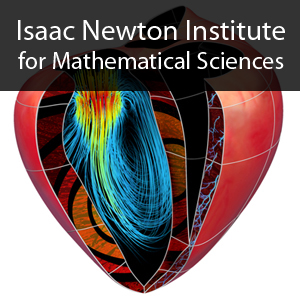Building detailed cardiac electrophysiological models from high-resolution images
Duration: 15 mins 36 secs
Share this media item:
Embed this media item:
Embed this media item:
About this item

| Description: |
Grau, V (Oxford)
Wednesday 22 July 2009, 10:45-11:00 |
|---|
| Created: | 2009-07-24 18:26 | ||
|---|---|---|---|
| Collection: | Cardiac Physiome Project | ||
| Publisher: | Isaac Newton Institute | ||
| Copyright: | Grau, V (Oxford) | ||
| Language: | eng (English) | ||
| Distribution: |
World
|
||
| Credits: |
|
||
| Explicit content: | No | ||
| Aspect Ratio: | 4:3 | ||
| Screencast: | No | ||
| Bumper: | UCS Default | ||
| Trailer: | UCS Default | ||
| Abstract: | Computational models of the heart using simplified geometries have been used successfully in a number of applications. At the same time, the effect of microstructure has been shown to be relevant in studies of fundamental mechanisms of cardiac function. Our goal is to investigate the effect of the level of detail of cardiac electrophysiological models when applied to the study of specific problems. We have developed a semi-automated pipeline to build highly-detailed model geometries from high resolution MRI and histological images. The methods include segmentation of MRI images, co-registration of MRI volumes with histology slices, delineation of important structures such as papillary muscles or valves, mesh generation and electrophysiological simulation. Preferential orientation of myocytes is estimated and added to the model using either diffusion tensor MRI (DTMRI) or a parametric description. A quantitative comparison between these two techniques shows a general agreement between the estimated orientations, with localised differences for which specific modifications of the mathematical rules can be postulated. We have also developed methods to build simplified models (lacking macro- and microstructural elements such as papillary muscles, endocardial trabeculations or coronary vessels) from the same images. We apply these methods to build detailed and simplified models of rabbit and rat hearts. Simulations of electrical activation after stimulation at different anatomical locations highlight important local differences between different levels of detail, and allow us to investigate separately the effects of relevant macro- and microstructure. |
|---|---|
Available Formats
| Format | Quality | Bitrate | Size | |||
|---|---|---|---|---|---|---|
| MPEG-4 Video | 480x360 | 1.82 Mbits/sec | 213.95 MB | View | Download | |
| WebM | 450x360 | 638.82 kbits/sec | 72.37 MB | View | Download | |
| Flash Video | 480x360 | 805.78 kbits/sec | 91.67 MB | View | Download | |
| iPod Video | 320x240 | 504.68 kbits/sec | 57.42 MB | View | Download | |
| QuickTime | 480x360 | 506.91 kbits/sec | 57.67 MB | View | Download | |
| MP3 | 44100 Hz | 125.0 kbits/sec | 14.02 MB | Listen | Download | |
| Windows Media Video | 477.59 kbits/sec | 54.34 MB | View | Download | ||
| Auto * | (Allows browser to choose a format it supports) | |||||

